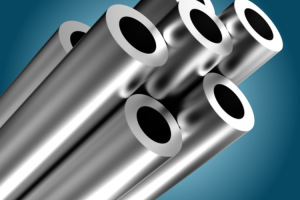Table of Contents
Introduction to the Properties of Stainless steel:
One thing that pops on our mind when someone says the word ‘Stainless Steel’ is ‘Corrosion Resistance’. They go together, mandatorily. For Stainless steel to be higher in corrosion resistance, the amount of chromium must be relatively high. Chromium is a self-healing protective oxide layer; the minimum amount of Chromium that must be in a Stainless Steel is 10.5%. Apart from Chromium, a Stainless Steel must contain Nickel and Molybdenum in high grades to be more corrosion resistant.
However, in an Arch City Steel where there are so many kinds and series of Stainless Steel, you need to identify more about the properties and application of Stainless steel, if you are going to purchase a bulk range of Stainless steel for a mass production purpose.
Six of the Properties of Stainless steel that you should know about:
Cryogenic Resistant:
For those who are not aware of Cryogenic resistance. It is a kind of resistance that is usually measured by the ductility or toughness at sub-zero temperatures. When the stainless steel is put at cryogenic temperature, the tensile strengths of austenitic stainless steel are remotely higher than when it is put at ambient temperatures. One more good quality is that they maintain good toughness for a long time.
Also, in the case of Ferritic, martensitic and precipitation hardening steels, the toughness drops considerably at low temperatures and therefore must not be used at sub-zero temperature.
Work Hardening of Stainless Steel
Through cold working, the grades of stainless steel tend to reasonably increase. This is one of the most beneficial properties of some particular kinds and series of Stainless steel. This is said to be effective largely because it is a simple route to make.
Hot Strength
Stainless steel with good grades tends to conserve high strength at high temperatures because of the increased content of Chromium in them. Also, elements like silicon and nitrogen can be present at a high rate. The high level of Chromium also helps in resisting the scaling at high temperatures.
Ductility of Stainless Steel
In simple words, Ductility is the point to which a metal or a material can endure plastic deformation. In this case, it is the point to which Stainless steel can maintain plastic deformation. It is assigned by the percentage of elongation in tests.
When compared with other types and kinds of Stainless steel, the percentage elongation that is the Ductility for austenitic kind of stainless steel is relatively high.
High Strength
As we know, there is a wide range of steels available in the market. Each differs from one another. Mild steels tend to have lower strength, and when compared to the Mild steels, Stainless Steel manages to have higher strength. Likewise, if we take duplex stainless steel and austenitic steels, duplex stainless steel has higher tensile strength and the austenitic steel has a lower tensile strength while compared to the duplex kind of Stainless steel.
- Magnetic Response of Stainless Steel
We all know what Magnetic response is and to be precise with the context, Magnetic Response is the physical attraction of steel to a magnet. In stainless steel, there is a wide range and not all Stainless steel is magnetic, but some are based on the kind and the elements used. The Austenitic grades are non-magnetic kinds. However, through cold working, a magnetic rejoinder can be prompted in the low austenitic grades. But still, the high Nickel grades stay non-magnetic.
The Applications of Stainless Steel:
Some of the places where we can apply the austenitic kind of stainless steel are given below:
They can be found in Kitchen sinks, some of the Architectural applications such as roofing and cladding. Also, they are applied in other Roofing areas like in the gutters. And they are found to be applied in Doors and Windows.
Some other areas where they are found are, the Benches and food preparation areas, in the Food processing equipment, in Heat exchangers, in microwave Ovens, Chemical tanks and more to be stated.
Key takeaways of the properties of Stainless Steel from the observation:
While learning about Stainless steel, there are certain properties we need to note.
They are:
- Cryogenic Resistant: Which is measured by toughness at sub-zero temperature.
- Work Hardening of Stainless Steel: That can be increased by cold working.
- Hot Strength: Where good grade steels tend to maintain high strength at high temperature.
- Ductility of Stainless Steel: The degree to which a material can endure plastic deformation.
- High Strength: Which differs from one line of steel to another.
- Magnetic Response of Stainless Steel: The steel- magnet attraction.
